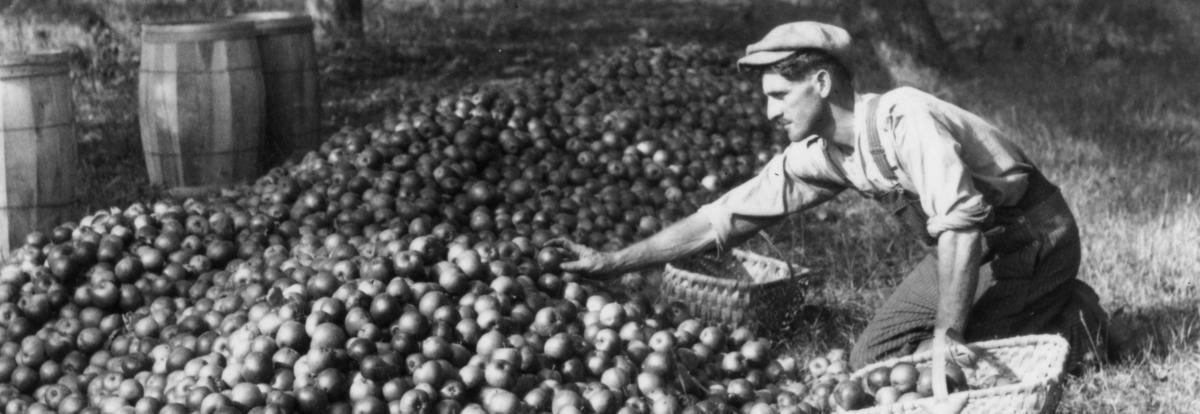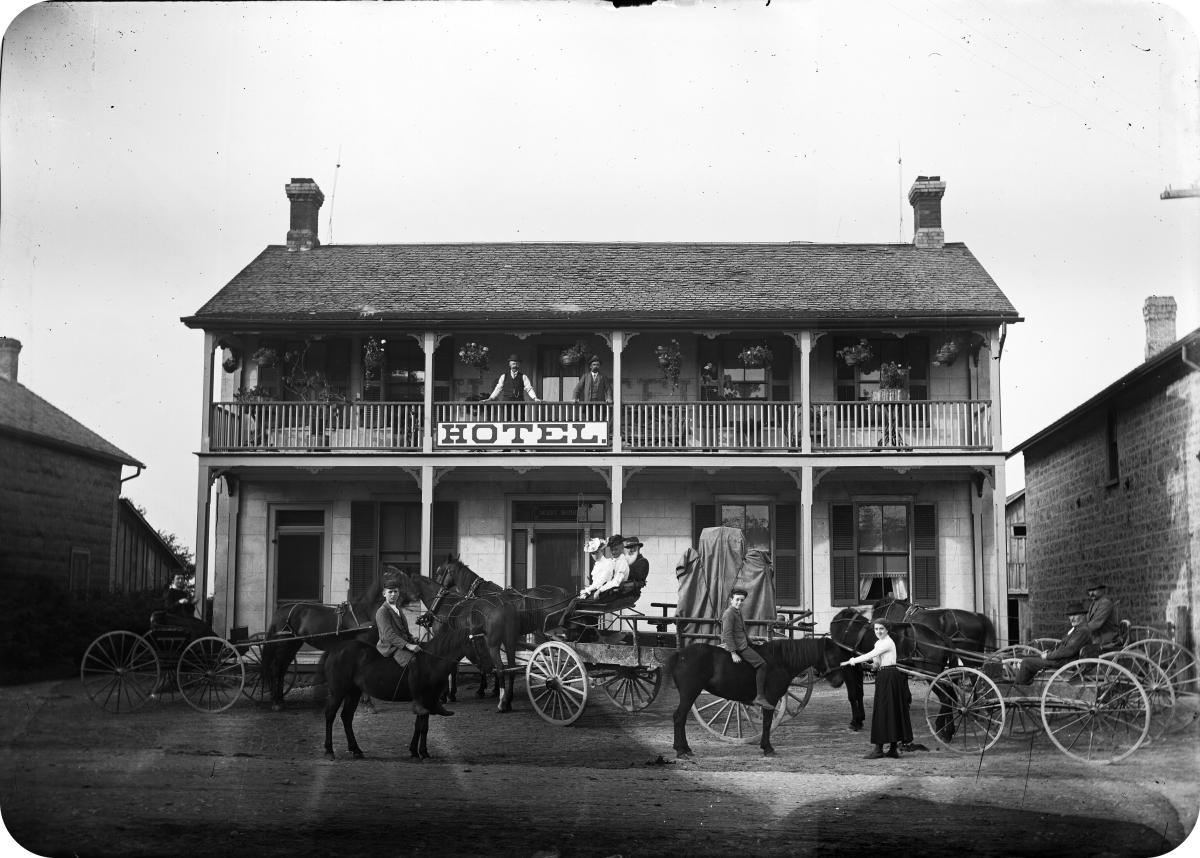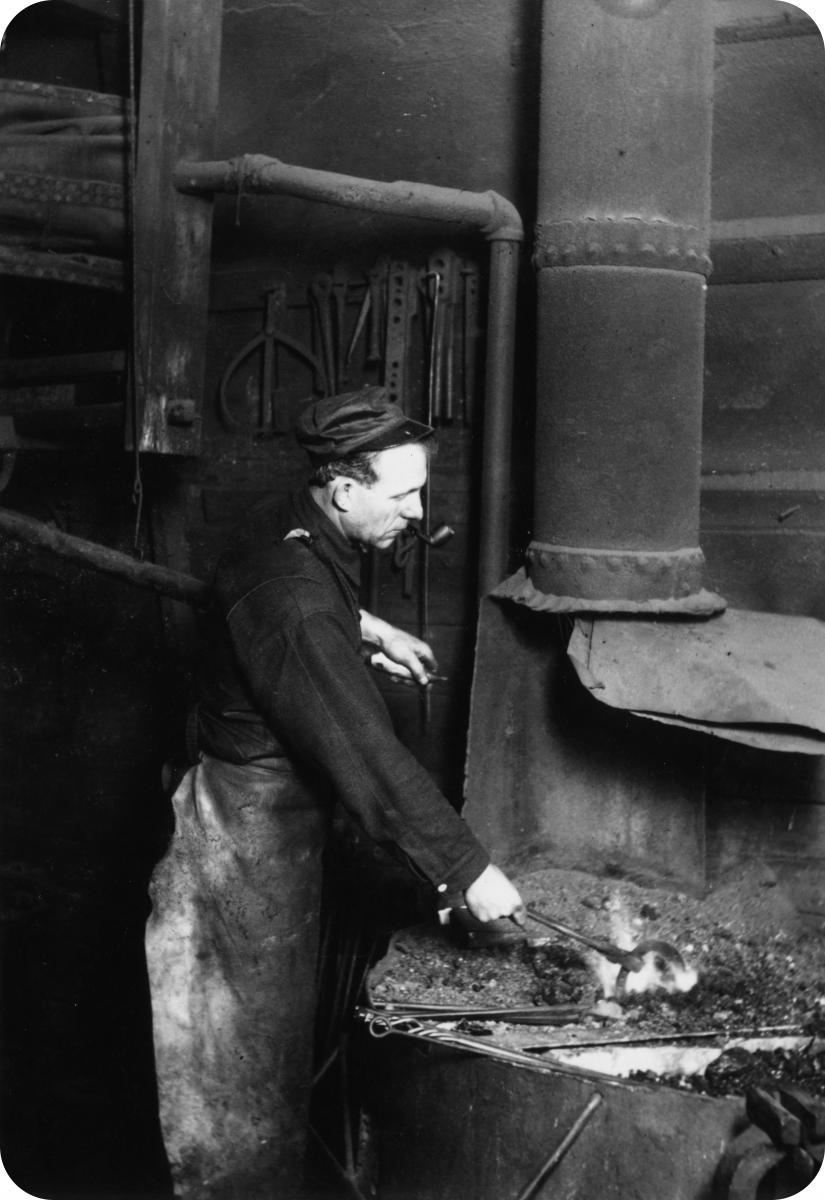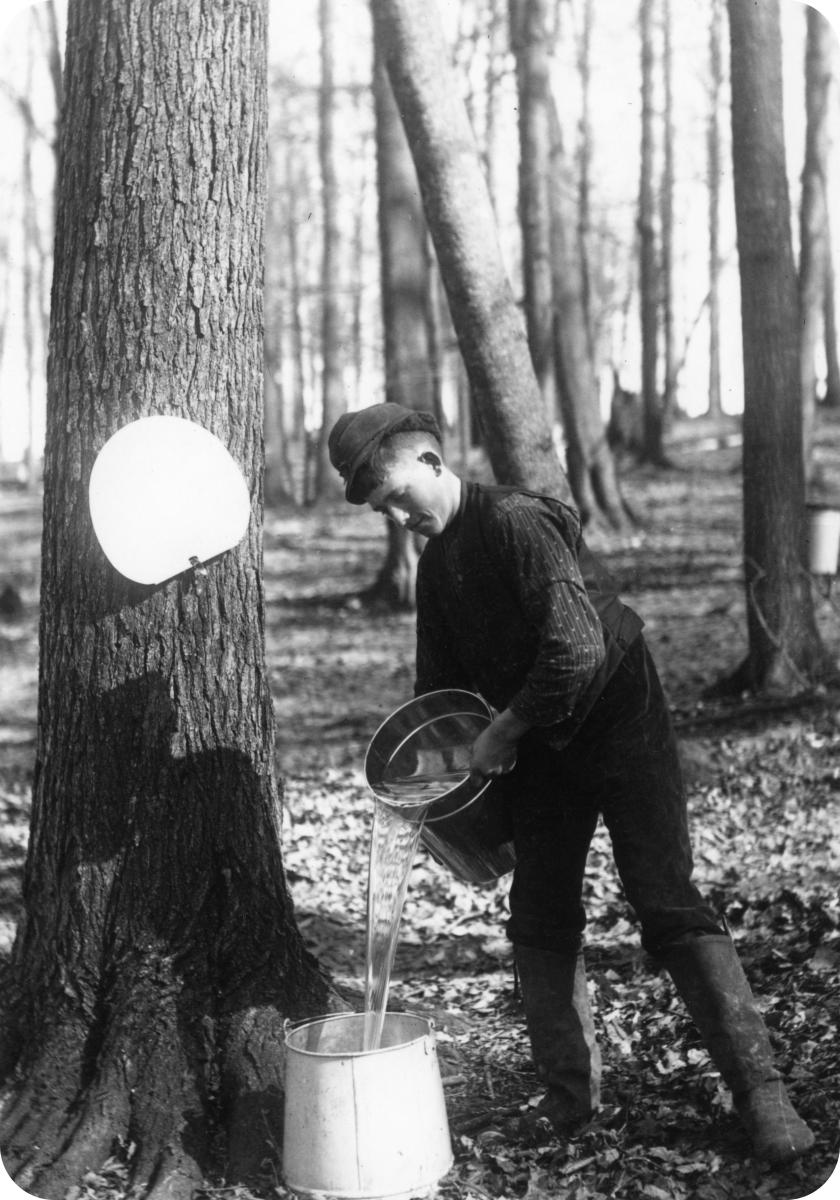Business Account Books

Photograph: Man gathering apples, Reuben Sallows collection, University of Guelph Library, Archives, and Special Collections, Agricultural History (XA1 MS A182 #0687)
Business account books are a valuable, often ignored, resource for the study of rural history. Historians have used account books, in conjunction with other routinely generated sources, to reveal their subjects’ worlds through the markets they operated in, the people they dealt with, and the goods they produced and consumed. Systematic studies based on account books range from trade in Atlantic fishing ports to rural commerce in Quebec and consumption patterns in Upper Canada (see some secondary source examples below).
We outline here how some historians have used account books, and we seek to encourage others in using them. As our list of business account books demonstrates, there are records for many businesses and trades in most regions.
The time and resources that went into creating these documents demonstrate the importance of the daily relationships they record. With some understanding of nineteenth century bookkeeping practices, we can uncover many facets of rural life through these books.
Deciding what sort of businesses to research depends largely on what questions we wish to ask. Merchant accounts offer the clearest access to everyday consumption patterns, the credit system, spatial-commercial relationships, prosopography, genealogy, and so on. However, tradespeople and manufacturers left records that reveal a different and complementary part of rural worlds. Rural manufacturers’ accounts help reveal the commodity chains between rural consumers and producers. These and artisan account books reveal the complicated worlds of people exchanging labour.
Daybooks and Ledgers
 Daybooks are a sequential record of transactions,
Daybooks are a sequential record of transactions,
which follow an establishment’s activities for the
period covered (see Figure 1). A merchant’s
daybooks recorded debits (dr), i.e. sales and charges
to someone’s account, and credits (cr), i.e. payments
on account, however made. A manufacturer’s
daybooks had a similar function, but the creditors
were usually employees and suppliers and the
debtors were those buying manufactured goods.
Both types of operations occasionally used
daybooks as “business diaries,” recording anything
from events on the street in front of a store to
accidents in a mill.
Ledgers list accounts by person, firm, or product (see Figure 2). Typically, they were based primarily on daybooks. They are more complete than daybooks, because they often include transactions (especially credits) not entered in the daybook, but in summarizing detail, they often omit information about specific transactions. In principle, either resource could be recreated with data from the other, but there are likely to be some gaps or inconsistencies. Most rural or small town businesses would only have needed one general ledger, but the accounts of some larger firms were divided into nominal ledgers for revenue and expense transactions, real ledgers for assets, and private ledgers for confidential accounts.
Account books describe the relationship between debits and credits, and each account is titled by one of those terms. “Dr.” is short form for debit and means that the said amount is charged “to” the account. “Cr.” is short form for credit and means that the account is credited “by” the said amount. In most account books useful for rural history a merchant debits a customer for purchases made from the store or business. That same customer could be credited by produce sold to the merchant, labour performed for the business, cash, and other forms of transaction.
Accounts were kept in either single entry or double entry systems. Single entry bookkeeping, the basic format for many small businesses even into the twentieth century, involved the single posting of transactions from the daybook to the ledger. The process recorded debits and credits but the accounts would not show profits until all accounts were balanced, usually once a year, and net equity was compared to the previous figure. Double entry posted each transaction twice; for example, a sale would appear in the ledger as a credit to the business and as a debit to the customer (see Figure 3).
Other types of account books may accompany
daybooks and ledgers, particularly in double
entry bookkeeping. Journals are much like
daybooks, in that they record daily
transactions, but they summarize the details
of daybook accounts and instruct the
bookkeeper where each transaction should go
in the ledger (see Figure 4). Similarly, cash
books assist the transition of accounts to a
double entry ledger by recording all cash
payments and cash receipts. Many other types
of business documents were created along with
these central accounts. Business transactions
were sometimes copied to the daybook from a
“wastebook” or a manufacturer’s “mill book,”
though these less formal documents rarely
survive. It is also possible to find wage and
payroll books, mill books, inventory lists, delivery books, and so on, all of which may offer material of use to rural history. A more complete study of these records appears in works such as Business Documents: Their Origins, Sources and Uses in Historical Research by John Armstrong and Stephanie Jones and Historical Accounting Records: A Guide for Archivists and Researchers by Rosemary E. Boyns, Trevor Boyns, and John Richard Edwards.
Issues and Problems
Perhaps the most significant criterion for evaluating a business account book
is the representativeness of the data. How typical was the business?
Did it resemble other businesses of the same trade? Were the accounts
consistent and can the aggregate data be verified by corresponding census or
municipal figures? It is important to look for clues as to how much of the
whole business is covered bythe accounts. For example, account books may
have omitted cash transactions. But even if business accounts covered nothing
but credit transactions we can learn a great dealabout rural people by
examining these sources. Another consideration is the length of run of data;
even quite short periods, however, can reveal much.
To study some aspect of rural consumption it is important to identify
accounts that have recorded merchandise in detail. Some account books were
more specific than others; records which generalized items with terms like
“clothing” “groceries,” or “sundries” are less useful. Even where sundries
were not itemized, however, account books offer many ways to examine rural
lives.
Understanding the Language
There are various resources to help understand the abbreviations and colloquialisms that were used in account books as well as the currencies.
Abbreviations:
Abbreviations and acronyms were important in record keeping. Ledgers and day books were expensive stationery, and, unfortunately for researchers, the space was sometimes conserved by using initials, code, slang or other abbreviated terms. The Dominion Business College offered a list of short forms (4) used in bookkeeping that may still help make sense of confusing abbreviations.
day books were expensive stationery, and, unfortunately for researchers, the space was sometimes conserved by using initials, code, slang or other abbreviated terms. The Dominion Business College offered a list of short forms (4) used in bookkeeping that may still help make sense of confusing abbreviations.
Colloquial Language:
Understanding colloquial language in account books is a challenge, but should not be an insuperable barrier. Often merchants used terms for their merchandise that are no longer common, and language varied so much with time and place that a comprehensive glossary is impracticable. Occasionally we might find a list of definitions in a published account book, or a contemporary text dealing specifically with the trade or item under question can help in learning the language.
Currency:
Before Confederation, Canadian businesses dealt in at least three currencies – dollars, pounds, and livres. The standard work on Canadian currency before 1900 is A.B.McCullough, Money and Exchange in Canada to 1900 (Toronto, 1984). See also Douglas McCalla, Planting the Province (245-7). For French units of measure and currency, which were still in use in rural Quebec far into the 19th century, see Alan Greer’s Peasant, Lord, and Merchant (250).